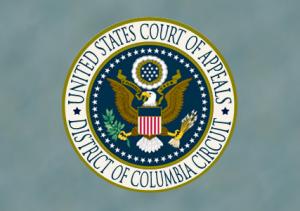Federal Court Upholds FERC's Approval of PJM Rules

The U.S. Court of Appeals for the District of Columbia Circuit has sustained a decision by the Federal Energy Regulatory Commission (FERC) in which the agency had accepted a regional transmission organization's (RTO's) proposed new rules governing the administration of capacity markets within the RTO's footprint. The amended rules filed by PJM Interconnection pertained to purchases and sales of capacity within the RTO's purview, which includes 13 Mid-Atlantic and Midwestern states plus the District of Columbia. The court held that parties opposing the new rules had failed to show that the FERC had acted unreasonably in adopting PJM's plan. To the contrary, the court determined that the FERC had explicitly cited to evidence that backed up its specific findings as to both the technical elements of the rule and underlying policy concerns.
The court stated that the FERC had based its decision on an appropriately developed record, which led it to conclude that, on balance, increased system reliability justified a net increase in costs. The court found as well that the FERC had fully explained the important noncost reasons for approving PJM's proposal. The court also pointed out that under statutory provisions governing procedures and requirements for decisions involving rates and rules, the FERC does not have to find net savings to support its broad conclusions supporting a rule.
The matter before the court centered on PJM's capacity market, which involves an annual auction. The RTO has overseen the subject capacity market since 2006 and had previously implemented market rules designed to enforce capacity commitments. But PJM had decided that those rules were no longer working. That is, PJM had discovered that some resource owners were making capacity commitments but then not actually providing that electricity when it was needed.
In considering the ensuing rule changes promulgated by PJM, the FERC related that under the prior rules, the penalties a capacity resource faced for not providing electricity were slight and easily avoided. To remedy that situation, PJM sought to establish new enforcement mechanisms through which to ensure that resources making a capacity commitment would actually fulfill that pledge when called upon.
As an example of the insufficient penalties, the FERC referenced problems faced by PJM in January 2014, when the PJM service area experienced unusually cold weather that resulted in very high demand for electricity. However, according to data presented by the RTO, 22% of its regional resources could not provide any power because they were experiencing outages.
The outages occurred at a time when many of PJM's traditional coaland oil-fired generators were aging and being retired. Consequently, PJM found itself depending more and more on new natural gas-fired generating plants, which presented a different set of reliability concerns. The RTO thus concluded that new rules were necessary, and it identified three primary reasons for the old market's failure: (1) lack of an adequate penalty structure; (2) limited ability to recover costs of necessary investments; and (3) incentives for trimming capital improvement plans and operating budgets.
The RTO thereupon crafted new rules targeted at curing those deficiencies, with the revised rules setting forth a new system of bonuses for fulfilling capacity commitments, in contrast to penalties for failing to provide capacity previously pledged. The FERC approved PJM's suggested changes in June of 2015. But several market participants appealed the FERC's order, with the petitioners arguing that the commission had not adequately considered the costs and benefits of PJM's proposal. In dismissing the appeals, the court held that the FERC had engaged in appropriate cost/benefit analyses and had concluded that the revised rules would benefit the PJM system. The court stated that in reaching its decision, the FERC had pointed to significant evidence in the record that supported PJM's position that the rule changes not only would help avoid the financial costs of energy price peaks and system outages likely under the old rules, but also would increase system reliability. The court observed as well that the FERC had relied on solid evidence in finding that (1) higher payments and the possibility of bonuses would encourage more reliable resources to enter the market; (2) conversely, less reliable resources would be encouraged to exit the market; and (3) PJM eventually might be able to procure less capacity to ensure reliability. Although cognizant that PJM's proposed modifications were likely to increase the costs of obtaining capacity by billions of dollars, the court stated that the FERC had fully considered the impact of such costs in authorizing the new regime. Indeed, the court said, the FERC had cited a formal cost/benefit analysis, commonly referred to as the "Exelon study," which had determined that, overall, the new market rules would produce net savings of between $900 million and $4.7 billion annually, starting in 2016.
The court added that although the petitioners had correctly stated that the Exelon study used a higher penalty for resources that failed to perform than the penalty the FERC had approved, the study's ultimate conclusions were not tied to the amount of the penalty. Rather, the court said, the study showed that the penalties had been successful in enhancing reliability.
As related by the court, the FERC had approved the lower penalty because it was persuaded that the penalty would sufficiently induce resources to perform and increase reliability. The FERC likewise was convinced that, even with a lower penalty, the net savings would be substantial. Advanced Energy Management Alliance v. Federal Energy Regulatory Commission, Nos. 16-1234 et al., June 20, 2017 (D.C.Cir.).



